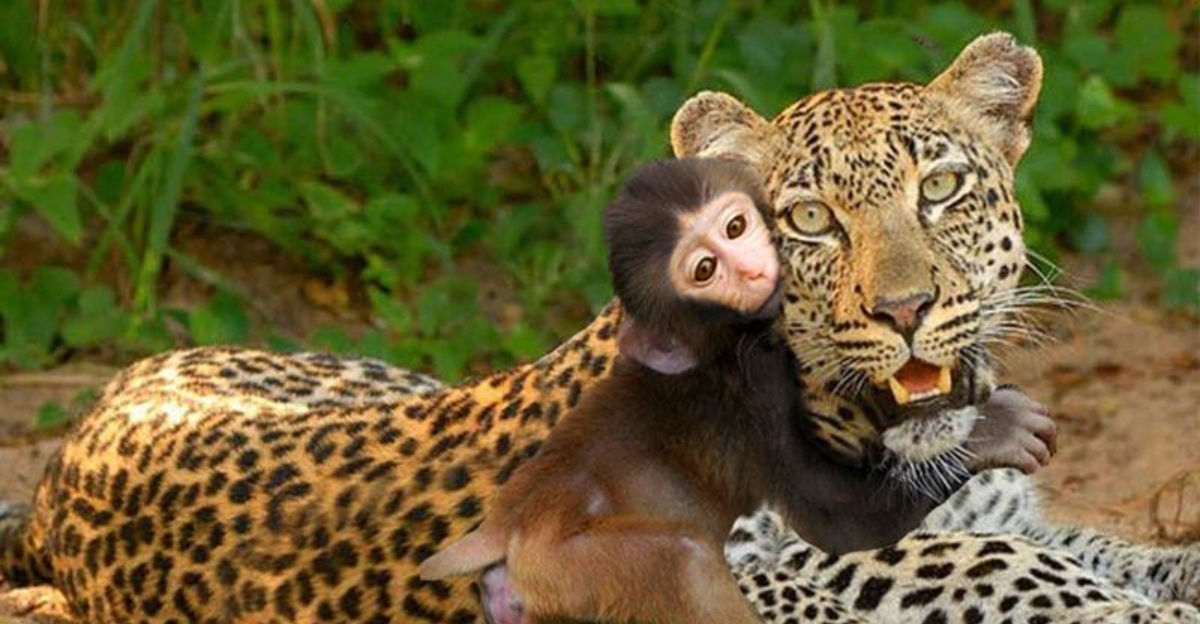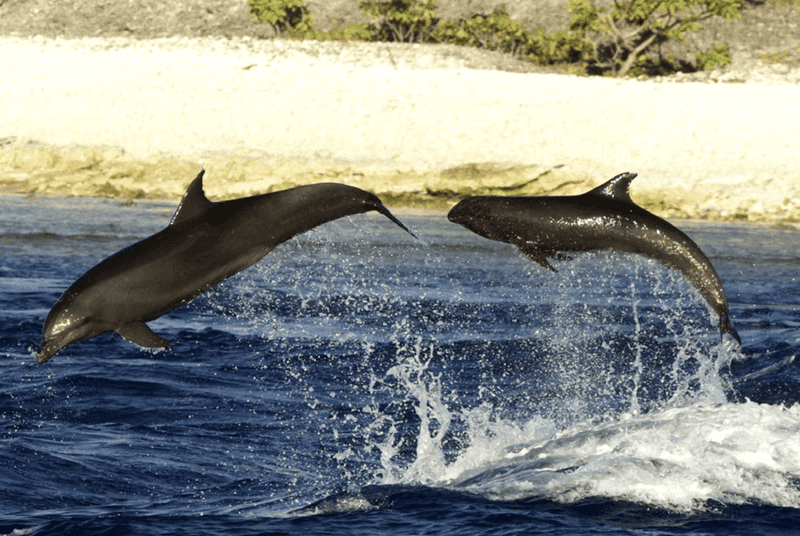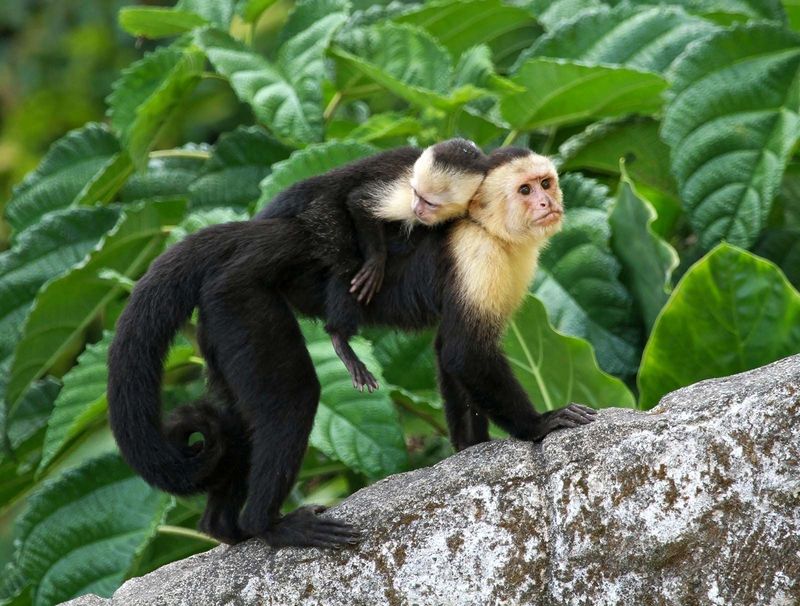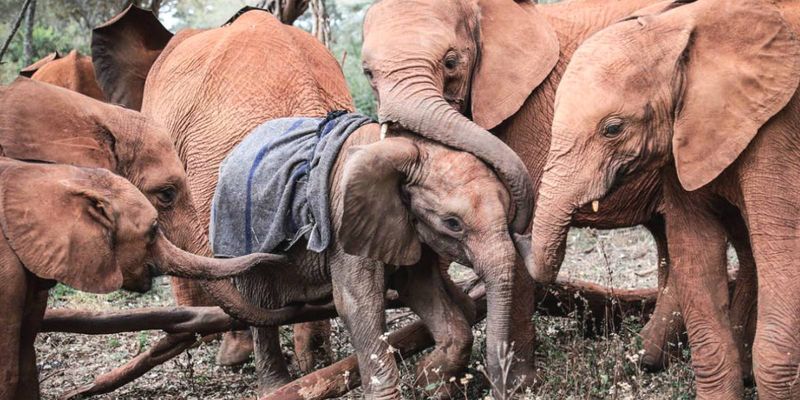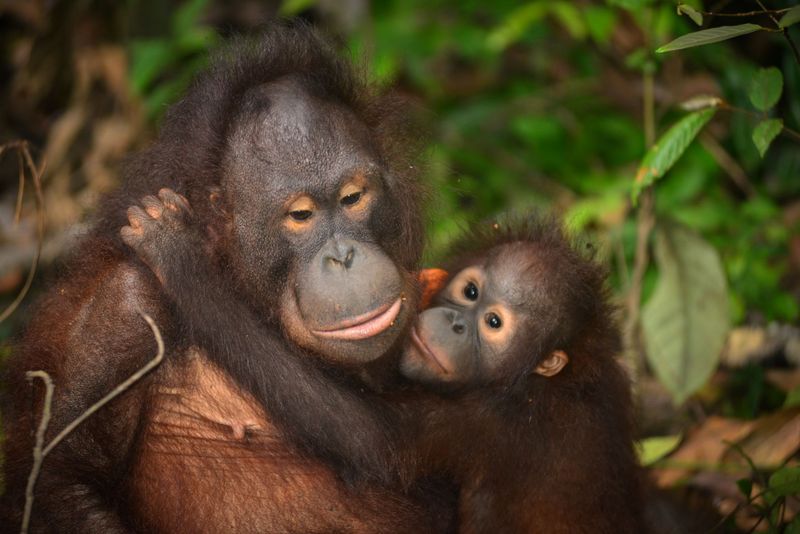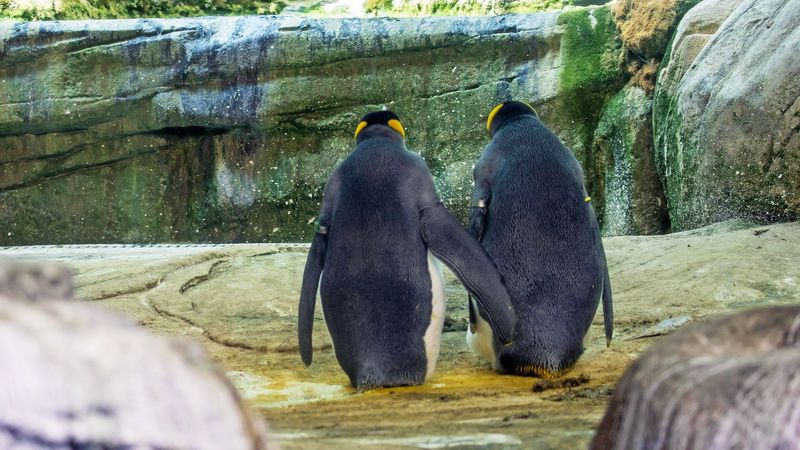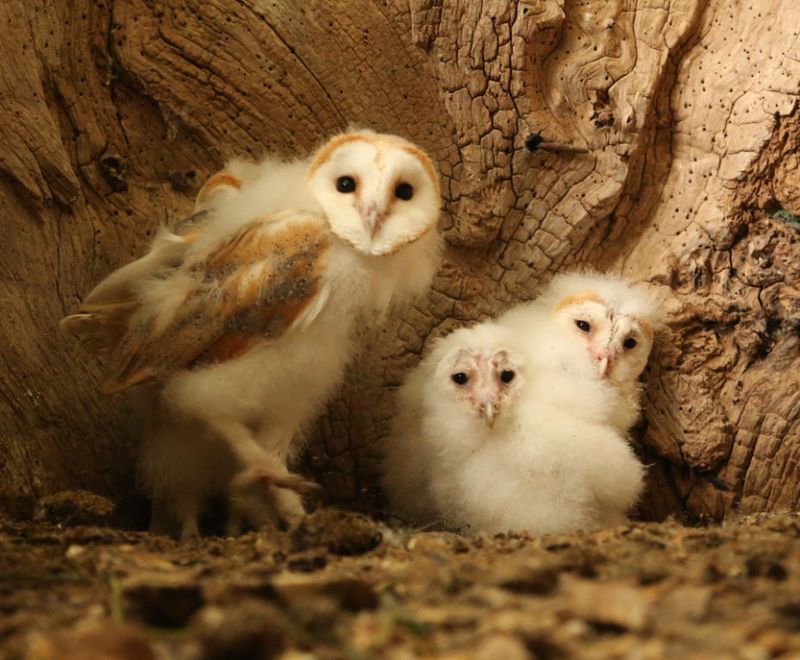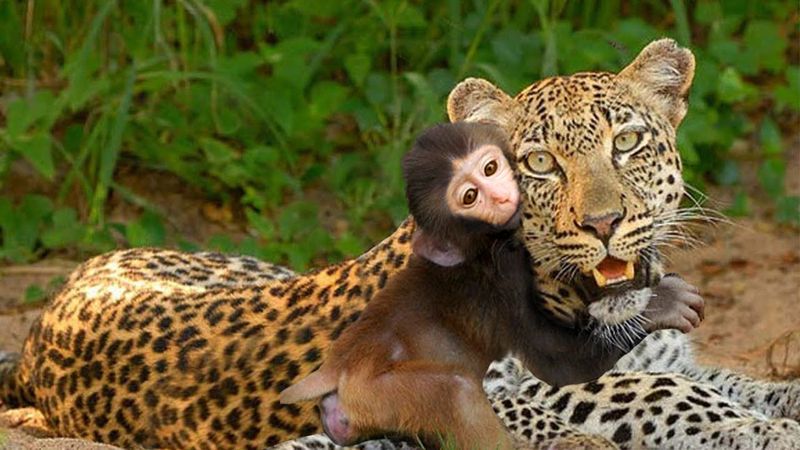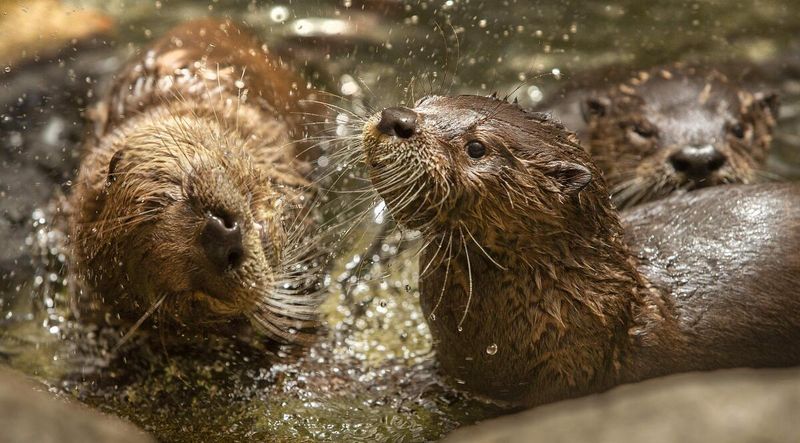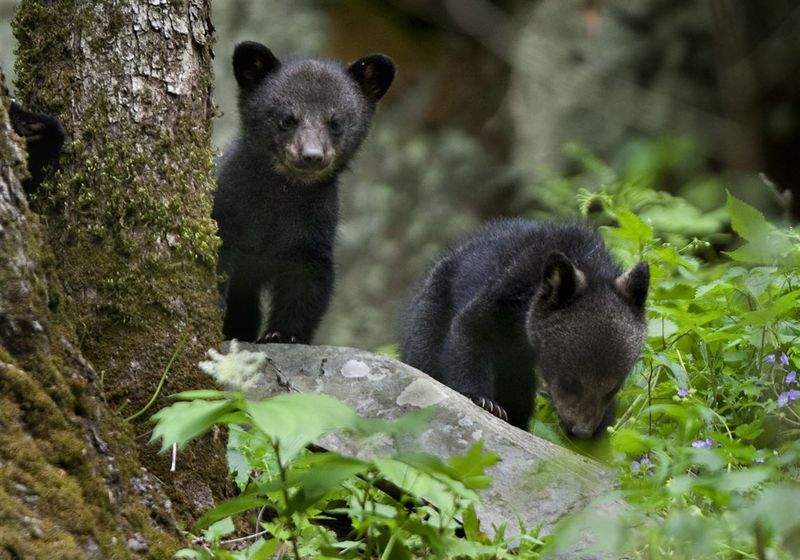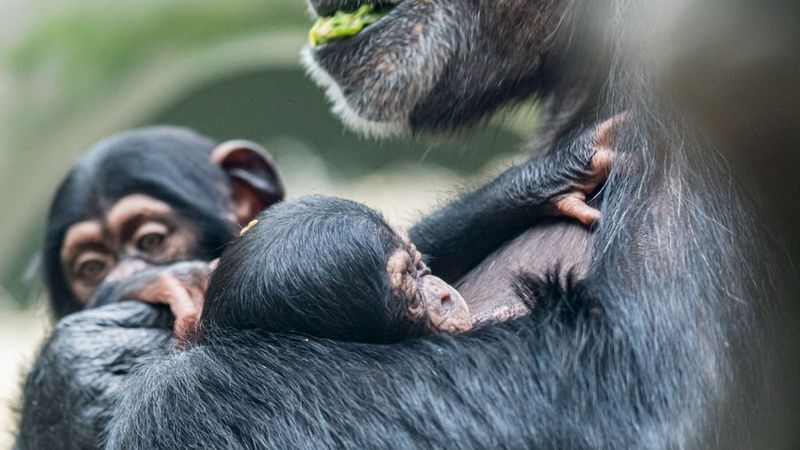📖 Table of Content:
- 1. Lionesses With Maternal Instincts
- 2. Sperm Whales Form Blended Families
- 3. Bottlenose Dolphins Welcome Outsiders
- 4. Capuchin Monkeys Share Parenting Duties
- 5. Red Squirrels Break Territorial Rules
- 6. Elephants Create Extended Families
- 7. Wolves Share Pack Resources
- 8. Orangutans Extend Maternal Care
- 9. Penguin Colonies Share Childcare
- 10. Barn Owls Welcome Nestlings
- 11. Leopards Defy Predatory Nature
- 12. Otters Create Blended Families
- 13. Kangaroos Share Their Pouches
- 14. Bison Herds Protect All Calves
- 15. Meerkat Clans Embrace Newcomers
- 16. Bears Show Surprising Flexibility
- 17. Chimpanzees Demonstrate Human-Like Adoption
Nature often surprises with touching and unexpected behaviors among animals. Instead of being guided solely by instinct, many wild species display remarkable care and compassion toward young that are not their own. These actions challenge the traditional view of survival as a strictly competitive pursuit.
Across various environments, animals have been observed adopting orphaned infants—even those of different species. Such occurrences highlight a powerful instinct to nurture, extending beyond immediate kinship. This behavior illustrates an emotional depth in the animal kingdom that is still being explored.
The phenomenon of cross-species adoption reveals a profound capacity for empathy in the wild. Acts of caregiving between unrelated animals suggest that emotional connections can form without genetic ties. These rare but meaningful bonds offer a new perspective on family and cooperation in nature.
1. Lionesses With Maternal Instincts
Female lions occasionally adopt abandoned antelopes or gazelle calves in the wild. This surprising behavior contradicts their natural predatory instincts and puzzles scientists studying animal behavior.
Researchers believe these adoptions happen when a lioness has recently lost her own cubs and her maternal hormones are still active. The drive to nurture overrides her hunting instinct, at least temporarily.
One famous case in Kenya documented a lioness who protected a baby oryx for weeks, even defending it against other predators. Though these adoptions rarely last long-term, they showcase the complex emotional lives of these powerful cats.
2. Sperm Whales Form Blended Families
Displaying strong social bonds, sperm whales occasionally adopt calves that have lost their mothers, even from other pods.
When disaster strikes—like hunting or natural calamities—surviving adults will sometimes incorporate unrelated calves into their family units. The adoptive mothers nurse and protect these orphans as if they were their own offspring.
Marine biologists have documented cases where disabled calves receive special attention from multiple adults in the pod. This communal parenting strategy helps ensure the survival of the species even when individual mothers are lost.
3. Bottlenose Dolphins Welcome Outsiders
Acts of interspecies adoption by bottlenose dolphins reveal an exceptional level of compassion.
In one instance, a pod integrated an abandoned melon-headed whale calf into their group and nurtured it for over three years.
The adoptive mother allowed the orphan to nurse alongside her biological offspring. Scientists observed the foreign calf adapting to dolphin social behaviors and communication patterns despite the species differences.
This flexibility extends beyond cetaceans—dolphins have been observed protecting smaller marine mammals from predators and guiding lost whales back to open water. Their intelligence and social complexity make them particularly adept at forming cross-species bonds.
4. Capuchin Monkeys Share Parenting Duties
Among the leafy canopies of Central and South American forests, capuchin monkeys showcase remarkable parenting flexibility. These highly intelligent primates readily adopt orphaned youngsters, even those from neighboring troops with different genetic lineages.
The entire community participates in raising adopted infants. Males carry and protect the little ones while females share nursing duties when possible. This cooperative child-rearing strategy strengthens social bonds within the group.
Researchers have even documented capuchins adopting abandoned baby squirrels and marmosets in rare cases. Their nurturing approach involves teaching survival skills like finding food and avoiding predators, regardless of the adoptee’s species.
5. Red Squirrels Break Territorial Rules
Territorial by nature, red squirrels usually respond to outsiders with hostility. Despite this, there have been instances where they’ve allowed orphaned babies to stay, defying their usual behavior.
Female red squirrels have been observed retrieving abandoned young from neighboring nests and integrating them into their own families. This behavior defies their usual territorial instincts and appears to be triggered by the distinctive distress calls of baby squirrels.
Even more surprisingly, some female squirrels have adopted orphaned chipmunks and flying squirrels. The adoptive mother teaches these cross-species youngsters essential survival skills like nut caching and nest building before they eventually establish their own territories.
6. Elephants Create Extended Families
Family bonds in elephant herds are flexible, with group members often helping raise each other’s young.
Under the leadership of a matriarch, even unrelated orphans find a place within the herd’s structure.
Adult females take turns babysitting, protecting, and teaching orphaned elephants essential skills. The entire herd adjusts its traveling pace to accommodate younger members who struggle to keep up.
Beyond their own species, elephants have been documented forming protective relationships with other animals. In Kenya’s Sheldrick Wildlife Trust, rescued elephants have formed bonds with orphaned rhinos and giraffes, standing guard over them and displaying genuine concern for their welfare.
7. Wolves Share Pack Resources
Though wild wolf packs operate under firm hierarchies, they can be unexpectedly inclusive.
Studies have observed them taking in abandoned pups from other groups and raising them as their own.
More surprisingly, wolves occasionally adopt coyote pups found alone in the wilderness. The adoptees learn wolf social behaviors and hunting techniques, though they retain some of their coyote instincts.
This cross-species nurturing reveals the complex balance between instinct and adaptation. While competition between wolves and coyotes is common, the instinct to nurture vulnerable young can override species boundaries when an adult wolf encounters an orphaned pup.
8. Orangutans Extend Maternal Care
Deep in the rainforests of Borneo and Sumatra, orangutans demonstrate extraordinary parenting dedication. These great apes normally raise a single offspring for up to eight years—the longest childhood of any animal except humans.
Rehabilitators working with rescued orangutans have observed females adopting orphaned babies, even when they already have biological offspring. The adoptive mothers teach vital survival skills like nest-building, identifying safe foods, and navigating the complex forest canopy.
Beyond their own species, orangutans in sanctuaries have formed nurturing bonds with tiger cubs and sun bear orphans. Their gentle, patient approach to parenting makes them exceptionally capable of caring for diverse young animals.
9. Penguin Colonies Share Childcare
Emperor penguins brave Antarctica’s harsh conditions through remarkable cooperative parenting. When blizzards separate families, returning adults sometimes adopt unclaimed chicks rather than leaving them to perish in the cold.
The adoption process involves a period of vocalization where the adult and orphaned chick establish a new bond. Once accepted, the adoptive parent will share food, provide warmth, and protect the chick just as they would their biological offspring.
Scientists have documented cases where penguins adopted chicks from different penguin species that had wandered into their colonies. This flexibility helps maximize survival rates in one of Earth’s most challenging environments where abandonment would mean certain death.
10. Barn Owls Welcome Nestlings
Known for their dedicated care of their own brood, barn owls rarely tend to others’ young.
Yet in situations where nests are combined, they’ve occasionally accepted and nurtured non-biological nestlings.
The adoption process appears seamless—any small, begging chick in the nest receives food from the returning adults. This adaptability helps maintain owl populations when nests are destroyed by storms or human activity.
Wildlife rehabilitators have successfully placed orphaned owlets of different species with barn owl families. The adoptive parents feed and protect these newcomers without discrimination, teaching them essential hunting skills before they fledge and leave the nest.
11. Leopards Defy Predatory Nature
Renowned for their solitary nature and hunting prowess, leopards usually show no mercy to prey.
Still, on rare occasions, females have adopted young antelopes or similar animals after slaying the mothers.
These adoptions typically occur when the leopard has recently lost her own cubs. The maternal hormones still circulating in her system redirect toward the orphaned prey animal, creating a temporary protective bond.
While these relationships rarely last long—the predatory instinct eventually returns—they offer fascinating glimpses into the complex emotional lives of big cats. Conservation photographers have captured images of leopards gently carrying young baboons or impala fawns as if they were their own cubs.
12. Otters Create Blended Families
Living in socially rich groups, river otters often extend care beyond their own offspring. Orphaned pups are frequently adopted, becoming part of the playful and cooperative dynamic.
Adult otters teach adopted youngsters essential survival skills like swimming, hunting for fish, and using tools to crack open shellfish. The entire group participates in raising orphans, taking turns watching over them while others forage.
Beyond their own species, otters in wildlife rehabilitation settings have formed bonds with abandoned beaver kits. Their naturally playful and social nature makes them adaptable parents for various semi-aquatic orphans, creating charming blended families along riverbanks.
13. Kangaroos Share Their Pouches
Female kangaroos possess specialized pouches designed for nurturing their joeys, but their maternal instincts sometimes extend beyond their own offspring. Wildlife rescuers have documented cases where mother kangaroos accept orphaned joeys into their pouches alongside their biological young.
The adoptive mother provides milk, warmth, and protection to both joeys equally. This remarkable flexibility helps maintain kangaroo populations when natural disasters or predators claim adult females.
In wildlife sanctuaries, kangaroos have even accepted wallaby joeys and other marsupial orphans. The pouch creates a safe environment where any young marsupial can continue developing, regardless of its species origin.
14. Bison Herds Protect All Calves
Across the North American plains, bison demonstrate remarkable collective parenting strategies. The entire herd participates in protecting vulnerable calves, creating a defensive formation with adults on the outside and young in the center.
When predators like wolves target the herd, adult bison don’t discriminate between their own calves and orphans. Any young bison receives equal protection from the adults, who form an intimidating wall of horns against threats.
This communal approach extends to adopting abandoned elk or moose calves that sometimes join bison herds. The massive adults shield these cross-species adoptees during migrations and water crossings, increasing their chances of survival in open grassland environments.
15. Meerkat Clans Embrace Newcomers
Living in highly coordinated social groups, meerkats rely on cooperation to thrive in harsh environments.
Their family structures often expand to include orphaned pups, showing flexibility beyond genetic connections.
The entire clan participates in raising young meerkats. Babysitters watch over pups while others forage, taking turns so everyone gets enough food. This cooperative approach extends to adopted members who receive the same care and protection as biological offspring.
In captivity, meerkats have demonstrated willingness to adopt young ground squirrels and other small mammals. Their inherent social nature and well-developed nurturing instincts make them exceptionally adaptable parents for various desert-dwelling orphans.
16. Bears Show Surprising Flexibility
Bears typically maintain fierce independence, yet mother bears occasionally demonstrate unexpected parenting flexibility. Wildlife researchers have documented cases of female bears adopting cubs orphaned when their mothers were killed by hunters or in territorial disputes.
The adoption process involves careful scent recognition. If the orphaned cub carries familiar odors from the same territory, a mother bear may accept it alongside her biological cubs.
Black bears have even been observed adopting cubs from different bear species. In one famous case in northern Canada, a black bear female was documented raising a grizzly cub alongside her own offspring, teaching it the same foraging and survival skills despite the species difference.
17. Chimpanzees Demonstrate Human-Like Adoption
Our closest genetic relatives, chimpanzees share many social behaviors with humans, including formal adoption practices. When mothers die in wild chimp communities, other females—often sisters or friends of the deceased—step in to raise the orphaned youngsters.
Male chimps participate too, showing special tolerance toward orphans during food sharing and rest periods. The adoption becomes official when the adult begins carrying the orphan on journeys and defending it during conflicts.
Beyond their species, chimps in sanctuaries have formed nurturing bonds with various orphaned primates and even human babies in emergency situations. Their capacity for empathy and emotional attachment makes these adoptions more similar to human adoption than almost any other animal.
